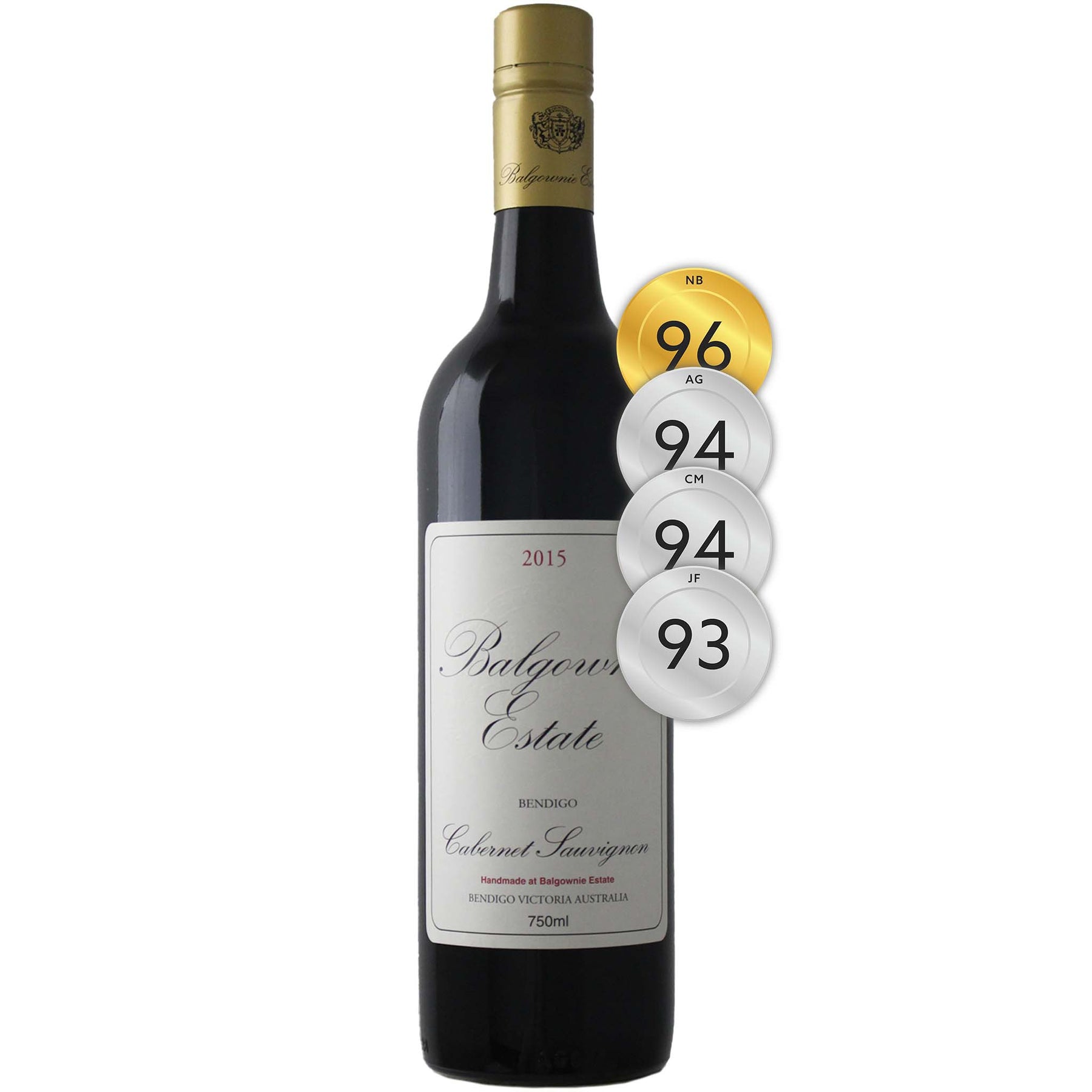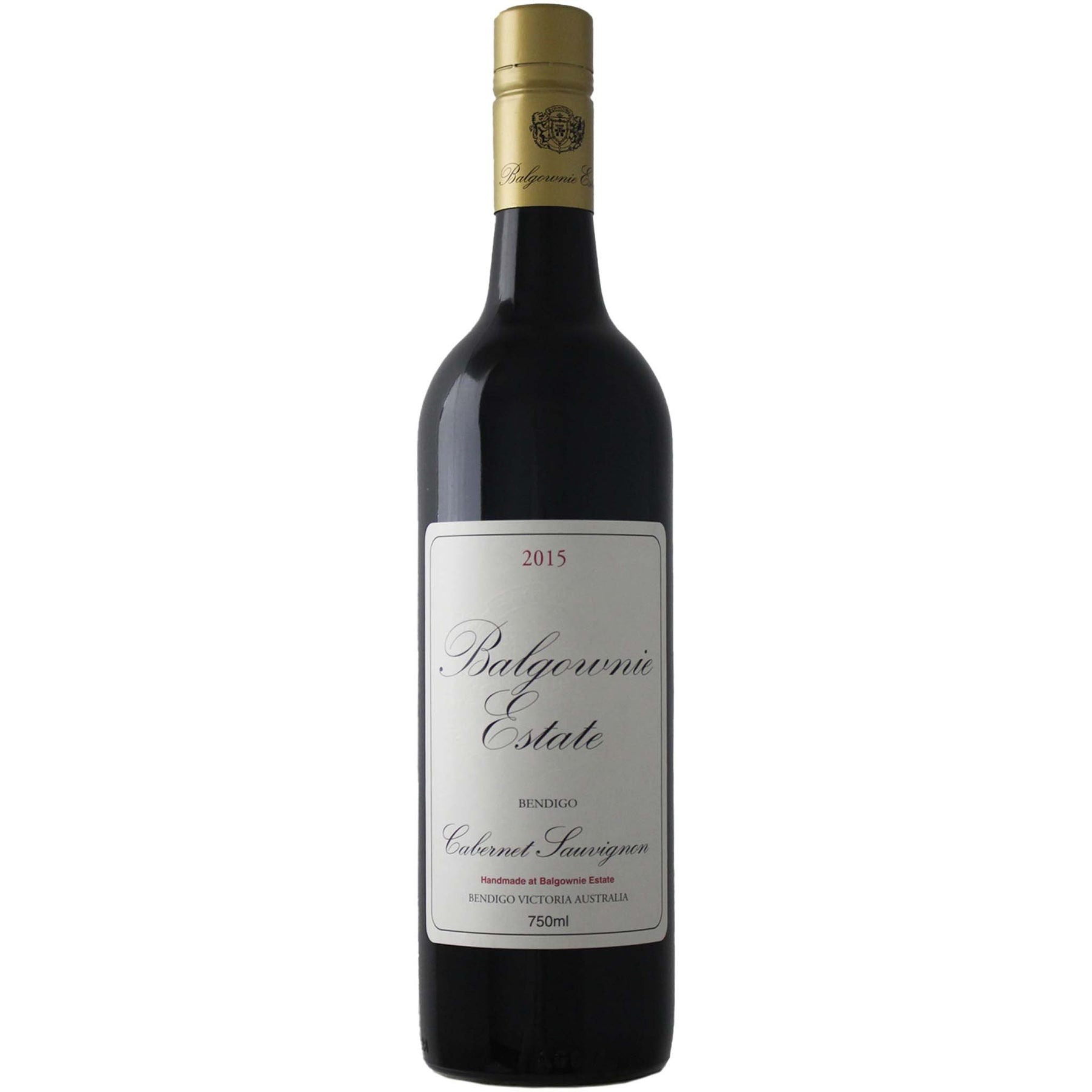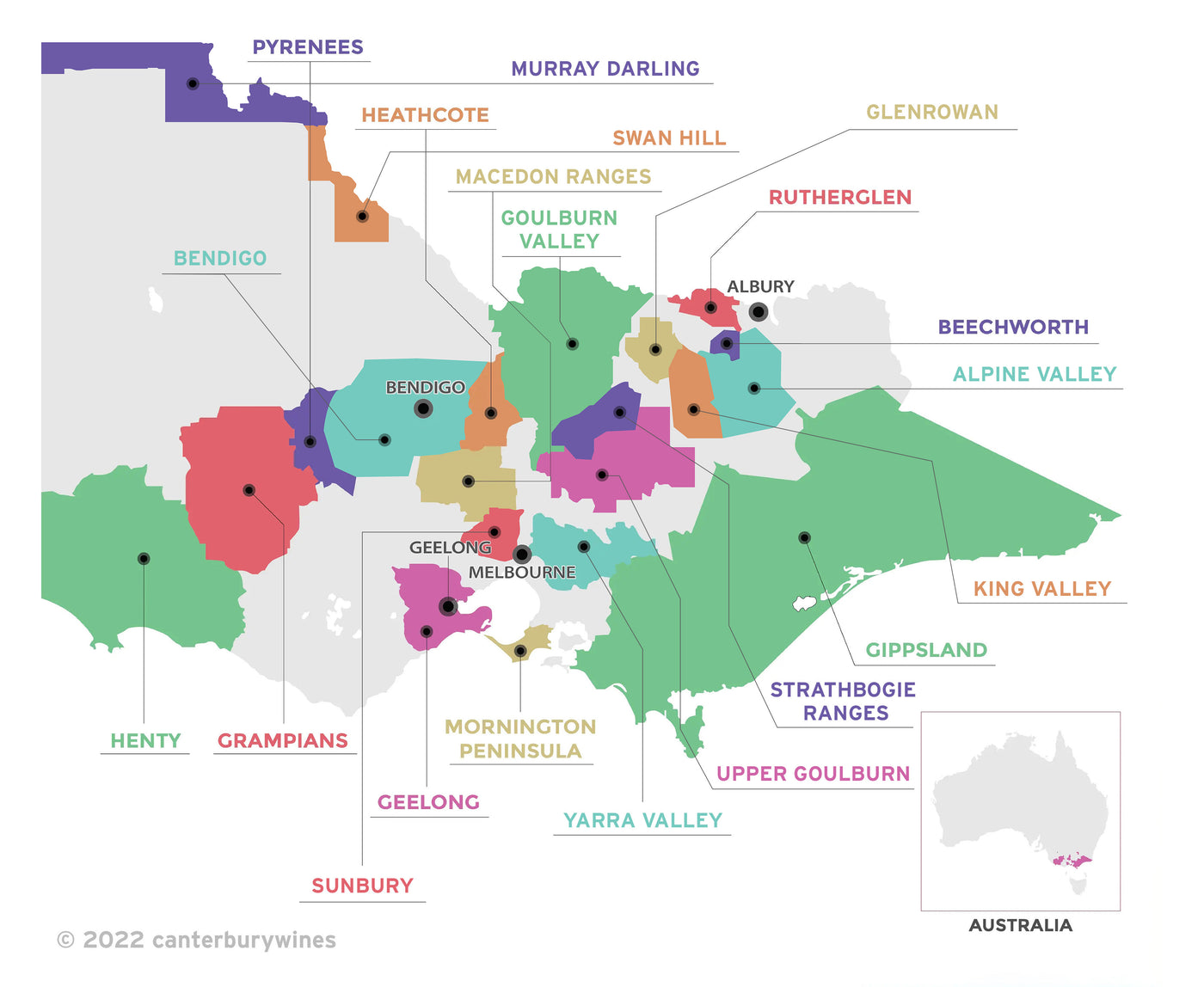

Balgownie Estate Bendigo Cabernet Sauvignon 2015
Style: Red Wine
Closure: Screwcap
Balgownie Estate Bendigo Cabernet Sauvignon 2015
Warehouse
34 Redland Drive
Vermont VIC 3133
Australia
Producer: Balgownie Estate
Country: Australia
Region: Bendigo
Vintage: 2015
Critic Score: 96
Alcohol: 13.6%
Size: 750 ml
Drink by: 2040
Balgownie Estate was established by the now legendary winemaker Stuart Anderson in 1969. At the time, it was the first vineyard planted in the Bendigo district in more than 80 years. The 33 hectare vineyard is situated on a gentle slope overlooking Myer's Creek at Maiden Gully. This superb site of alluvial soil has major plantings of cabernet sauvignon and shiraz. Cabernet sauvignon was always, and still is, the flagship grape at Balgownie.
"This is a classic Balgownie Cab, showing that trademark Bendigo generosity of flavour. Bold flavours but with an ageless balance to it, and not overripe in the slightest. I don't need more Cabernet in my cellar but I'd have a bottle of this." Andrew Graham
Expert reviews
"Garnet colour with a tease of tawny. This needs a good swirl once liberated - blueberries and cranberries, savoury oak. It's fresh and poised on the palate, with a tease of sweetness (raspberry) tempered by crunchy, red cherry acidity and a soft oak frame. Limitless potential. Drink 2019 – 2039." Nick Butler, The Real Review - 96 points
"There's no doubting the charm of Balgownie Cabernet in a good vintage. You get boldness, weight and impact, but it never feels overwhelming, and they live forever. This is a classic Balgownie Cab, showing that trademark Bendigo generosity of flavour, delivered at 13.6% alcohol. Cedar, lead pencil character is classically, welcomingly varietal and backed by a core of rich and dense blackberry. It's all tipped off with surprisingly fine, not burly, tannins. Bold flavours – we're still in full-bodied red territory, but with an ageless balance to it, and not overripe in the slightest. Yes. Best drinking: Now to twenty years easy. Would I buy it? Yes, quality. I don't need more Cabernet in my cellar but I'd have a bottle of this.” Andrew Graham, Oz Wine Review – 94 points
"Average vine age is 47 years. When Balgownie cabernet is good, it's good. Here it is. Certainly varietal, pumped up with flavour, regional, lengthy, sturdy and commanding. All these descriptors are true, and what more could you ask. Gum leaves infused through blackcurrant, dust splashed across dark chocolate. Big folds of tannnin.It's good now but it has a decade or two up its sleeve. Drink : 2019 – 2034+." Campbell Mattinson, The Wine Front – 94 points
"Immensely and immediately approachable with of the varietal flavours at play from cassis and blackcurrants, warm earth, saltbush and attractive slippery oak too. Medium-bodied, tooth-coating tannins and enough oomph to last another decade or so but don't overlook it now." Jane Faulkner – 93 points
About the winery
"Balgownie Estate was one of the pioneers of commercial winemaking in the Bendigo Region, first planting vines in 1969. Established by the now legendary winemaker Stuart Anderson in 1969, Balgownie Estate was the first vineyard planted in the Bendigo district in more than 80 years. The emergence of Balgownie Estate as a serious red wine producer in the 1970's led to the rapid expansion of the central goldfields wine growing region and was a significant player in the rebirth of the Victorian wine industry.
The 33 hectare vineyard is situated on a gentle slope overlooking Myer's Creek at Maiden Gully. This superb site of alluvial soil has major plantings of cabernet sauvignon and shiraz with smaller amounts of pinot noir, chardonnay, merlot, cabernet franc, petit verdot and viognier. The conditions for premium wine grape growing are ideal with long hot summer days ameliorated by very cool overnight temperatures. This allows optimum ripeness while retaining that vital core of acidity.
Balgownie Estate at Bendigo has long occupied a soft spot in my heart. Aside from the fact that central-western Victoria is where I grew up, the wines of Stuart Anderson were among the first wines of the Victorian renaissance that excited me. Anderson produced his maiden vintage in 1972.
It was the first vineyard planted in the district for more than 80 years and inspired a burst of activity that has sadly not been sustained in recent times, perhaps because Bendigo is rather dry and a little too warm for the fashionable varieties of the day such as pinot noir and sauvignon blanc. But it is an excellent vineyard—and region—for the fuller-bodied red varieties and cabernet sauvignon was always the flagship grape at Balgownie. Most of the activity in the Bendigo region these days is in the south of the region, around Harcourt.
As Anderson became more interested in pinot noir, and the cooler Victorian regions especially Macedon Ranges, he engineered a buy-out of Balgownie by Mildara Blass, under whose ownership Balgownie was sadly neglected. But it is now flourishing under private ownership, and in the 21st century has been reinvented with a Yarra Valley property including a restaurant and accommodation. It produces a fine range of Yarra Valley wines. Unhappily, the restaurant burnt down in 2020 in what has been termed the burnt icing on the COVID cake. There was AUD $3.5 million in damage, but rebuilding is underway.
The Bendigo property, which also now has a restaurant, is owned by a Hong Kong investor and the Yarra Valley property is owned by a company listed on the Hong Kong stock exchange.
Winemaker across the portfolio is Tony Winspear, who has been at Balgownie since 1994 when he started his career as a vineyard and cellar hand. He studied while on the job—an external winemaking degree from Charles Sturt University - and became assistant winemaker in 2005 and chief winemaker in 2012." Huon Hooke, The Real Review

Victoria
Victoria is home to more than 800 wineries across 21 wine regions. The regions are Alpine Valley, Beechworth, Bendigo, Geelong, Gippsland, Glenrowan, Goulburn Valley, Grampians, Heathcote, Henty, King Valley, Macedon Ranges, Mornington Peninsula, Murray Darling, Pyrenees, Rutherglen, Strathbogie Ranges, Sunbury, Swan Hill, Upper Goulburn and Yarra Valley.
Victoria's first vines were planted at Yering in the Yarra Valley in 1838. By 1868 over 3,000 acres had been planted in Victoria, establishing Victoria as the premier wine State of the day. Today, the original vineyards planted at Best's Wines are among the oldest and rarest pre-phylloxera plantings in the world.
Victoria's climate varies from hot and dry in the north to cool in the south and each wine region specialises in different varietals. For example, Rutherglen in the north is famous for its opulent Muscats and Topaque and bold reds, while the many cooler climate regions near Melbourne produce world class Chardonnay and pinot Noir. Victoria is truly a wine lover's playground.


